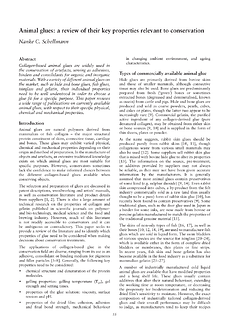So I went shopping for hide glue in 192-gram or even 164-gram Bloom strength and found that in Italy all you can find nowadays is bone glue. The difference is that hide glue is made with cows’ skins and tendons while bone glue is made with bones. Hide glue is in granules or powder, while bone glue is in pearls.
Only a handful of sellers/resellers in Europe do sell hide glue but it’s usually from 251-gram up, this is what I used, along with bone glue. Bone glue, which I can find in most woodworking shops around here (albeit in not-so-great quality, it’s usually very dark), is usually sold without any information about its Bloom strength, which however I’ve found should be about 180-gram.
I’ve asked everywhere: the USA-based company Milligan&Higgins has no European reseller; the German Fritz Haeker doesn’t make glue anymore but only industrial-grade animal glue with impossibly high Bloom; the Netherlandian Trobas doesn’t make hide glue anymore but only edible gelatines; the Spanish CAM Moreu only sells from 25 Kg up (55 lbs). And then there are vendors like Kremer-pigmente who only sells hide glue in a Bloom strength of 235-265 (235 is near enough to the auspicable limit of 192, but fact is there is uncertainity about what Bloom strength actually is the glue they sell, from 235 to 265). Kremer says they could talk to their provider (I assume it’s Mulligan&Higgins) but I’d need to order a minimum of 500 Kg. Similar response by other vendors.
So there are US vendors online. They have 192 or 164-gram hide glue, but most of them don’t ship to Europe because hide glue is a biological product and it could be stopped at the customs etc. etc. Ebay sellers have a ridicolously high price. I ordered from woodfinishingenterprises.com for 45 US$ each 5 lbs bag (2.4 Kg). Compare with 63 US$ for a 3 lbs bag (1.3 Kg) of a prominent Ebay vendor. More than US$ 90 for shipping to Italy.
Problem is, I have only been able to locate two makers, as opposed to resellers, of hide glue worldwide: Milligan&Higgins and Cam Moreu (who by the way is specialised in rabbit skins and only has two choises for hide glue, fortunately one of those is “about 200”.
While searching the vendor I have developed a bit of understanding of the market I will write of in my next post.

